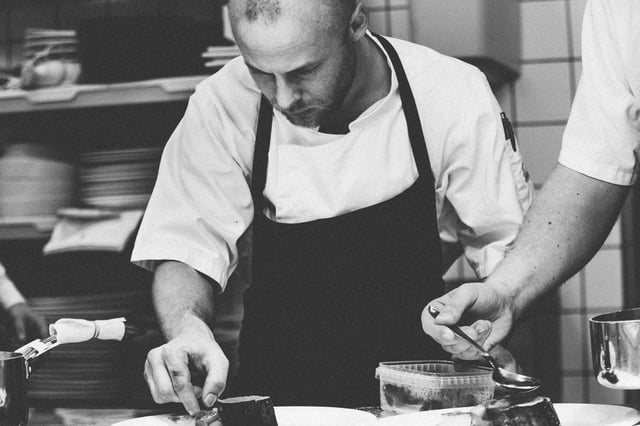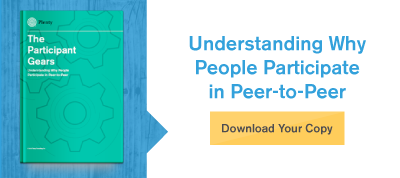3 Things The Great British Baking Show Taught Me About Stewardship
If you share my frustration with reality television, long for the days of feel-good entertainment, and love food – then the Great British Baking Show is for you. The PBS show is equal parts cooking competition and idyllic TV vacation, and it has become a central part of my self-care routine.
But the show has more to offer than gingham accents and delicious pastries. Season one taught me a few lessons that go beyond the kitchen and apply to best practices for stewarding your peer-to-peer fundraisers.
Let’s dig into the three stewardship best practices that will improve your program’s relationship with its fundraisers:
1. Social proof matters
If you’ve ever discussed celebrity influencers, put together a social media report, or wondered why a board game called Exploding Cats raised over $8 million on Kickstarter, then you’ve grappled with social proof. Social proof, simply put, is social influence. Social proof is why we trust companies with higher Yelp reviews, wait for an hour to eat at the restaurant with a line out the door, and support viral videos and campaigns with massive momentum. It’s why Richard, in a moment of uncertainty, decided to copy Nancy’s idea of using an icing bag to fill his Eastern European Pastry with a rich chocolatey icing.
The most sustainable and effective fundraising strategies consider social proof through the lens of their target audience. Celebrity influencers come at a high price tag, and fade in and out of public consciousness – but your fundraisers (if stewarded correctly) stick with you, and they don’t cost a thing. Here are three easy ways to build strong relationships with your fundraisers using the principles of social proof:
- Use badges and recognition levels to acknowledge when fundraisers meet milestones.
- Solicit your fundraisers’ feedback through surveys at the close of your event or campaign and implement changes to address the common themes.
- Surface testimonials from your fundraisers to share on social media and in your e-communications.
2. Presentation is a game-changer
In the Great British Baking show, judges weigh a dish not just by how it tastes, but also by how it looks. Ian found this out the hard way when he dumped his Baked Alaska into the garbage because he knew his black sesame ice cream wasn’t going to pass the presentation test.
 Your fundraisers, too, have a certain presentation threshold that must be respected, which contributes to their overall experience with your program. This applies to everything from your e-communications to your website, from your gear to your photography. Regardless of the limitations of your platform (we all know that not all fundraising solutions or email providers are created equal!), there are best practices you can follow that will ensure presentation appeal:
Your fundraisers, too, have a certain presentation threshold that must be respected, which contributes to their overall experience with your program. This applies to everything from your e-communications to your website, from your gear to your photography. Regardless of the limitations of your platform (we all know that not all fundraising solutions or email providers are created equal!), there are best practices you can follow that will ensure presentation appeal:
- Personalize your communications. Regardless of whether you’re launching totally personalized emails, acknowledge how and where your fundraisers are activating for you. Don’t send the same email to a walker in Atlanta as a runner in Philadelphia.
- Choose high-quality, relevant photography. Free stock images are widely available online, so there’s no excuse for a pixelated or basic clip art image. Go one step farther and choose photos that reflect the interests and demographics of your target audience – if you’re aiming to reach millennials, showing them family photos won’t do much to pique their interest.
- Gift great gear. If you’re providing gear to your team captains, top fundraisers, or sponsors, package it up nicely in a gift box. That’s right, a gift box. Use tissue paper, a handwritten note, and neatly fold the items inside. This may sound excessive, but if you’ve ever been on the receiving end of a gift box, monthly service, or nicely packaged gift, you understand the gratitude your fundraisers will feel when your package arrives.
3. Tactics only get you so far
Each weekly technical challenge requires the bakers to execute complex recipes with extremely vague instructions. One episode told the bakers to “make icing” with no instructions as to what kind, color, or application to use. These challenges separate the true bakers from the recipe-followers: the former group’s deep understanding of baking allows them to be nimble and quick on their feet when presented with an unforeseen circumstance. The latter group, well, they falter.
While in the thick of stewardship or activation, it is easy to forget the underlying strategy behind the tactics (why are we designating separate parking for our top fundraisers, again?). But when the forecast suddenly takes a turn for the worse and your event looks like it might be waterlogged, you’ll be thankful that you had a plan in place to activate fundraisers before event day – and you’ll come up with a more waterproof solution to give top fundraisers the VIP treatment.
If you find yourself getting lost in the weeds, remember that your tactics should layer up to the four peer-to-peer revenue drivers:
- Recruitment: How many people are coming to the event?
- Retention: How many people from last year are coming back to the event?
- Activation: How many people are fundraising?
- Performance: How much are people fundraising?
The choices your organization makes in terms of how you treat your donors determines their future with you — or if they will even bother having a future with you. Keeping these three stewardship practices in mind will go far in improving your organization’s fundraising program, and you’ll be rewarded with happy, loyal donors who will support you year after year.
Share this
You May Also Like
These Related Stories

Donor Stewardship: Bridging The Gap Between Passive & Active Supporters

4 Things To Know About DIY Fundraising



No Comments Yet
Let us know what you think